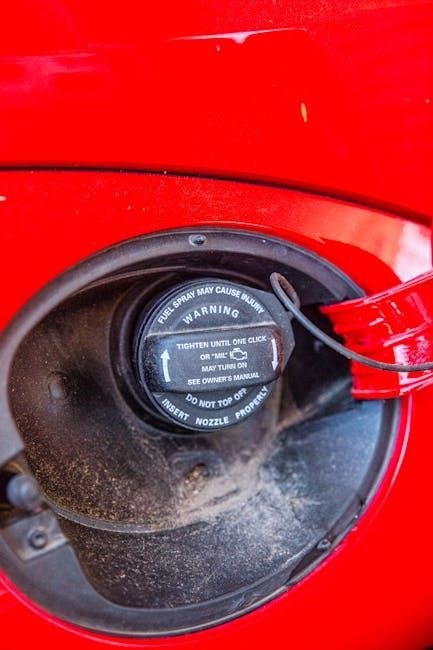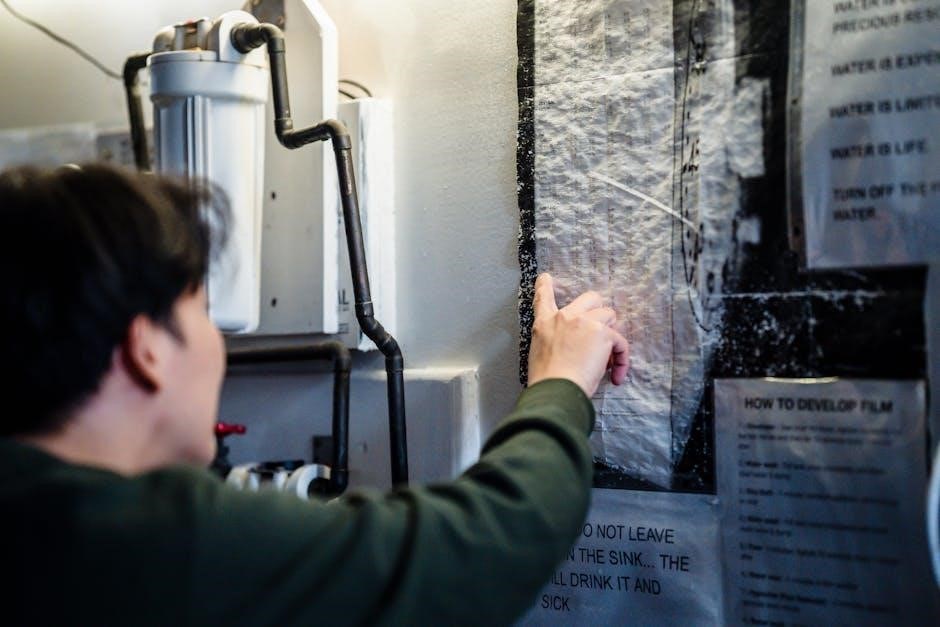Sure-Jell Instructions: A Comprehensive Guide
Sure-Jell pectin simplifies homemade jam and jelly making. This guide offers comprehensive instructions, from understanding pectin types to troubleshooting common issues. Discover simple Sure-Jell recipes for delicious fruit preserves.
Understanding Sure-Jell Pectin
Sure-Jell pectin is a key ingredient for successful jam and jelly making, ensuring proper setting. It’s essential to understand its role and how it interacts with fruit and sugar. Sure-Jell contains detailed instructions within each box, tailored to various recipes and fruit types. These instructions provide specific measurements and cooking times, crucial for achieving the desired consistency.
Different fruits have varying levels of natural pectin, influencing the amount of Sure-Jell needed. Following the recommended ratios ensures the jam or jelly sets correctly. Factors like fruit ripeness and acidity also affect the pectin’s effectiveness. Consulting the Sure-Jell guide helps address these variables, leading to consistent results. Understanding these nuances is critical for both beginners and experienced canners.
Types of Sure-Jell Pectin
Sure-Jell offers various pectin types to suit different recipes and dietary needs. The original yellow box is a classic choice for traditional jams and jellies, requiring full sugar content. Sure-Jell also provides a “less or no sugar needed” pectin, catering to those who prefer reduced sugar options. This variety allows using sugar substitutes or less sugar while still achieving a proper set.
Freezer jam pectin is another option, designed specifically for jams that will be stored in the freezer rather than processed in a boiling-water canner. Each Sure-Jell type comes with unique instructions, emphasizing the importance of selecting the correct one for your recipe. Using the wrong pectin can affect the final product’s texture and shelf life. Always refer to the packaging for specific guidelines.

Basic Steps for Making Jam with Sure-Jell
Making jam with Sure-Jell involves preparing fruit, combining ingredients, and cooking to a rolling boil. Sterilizing jars and proper canning are crucial for preserving the jam’s freshness and ensuring safe storage.
Preparing the Fruit
The first key step in making delightful jam with Sure-Jell is meticulously preparing your chosen fruit. Begin by selecting firm, ripe fruits for the best flavor and optimal set. Gently wash the fruit under cool, running water, removing any dirt or debris. Next, remove stems, pits, or cores as necessary, ensuring you are left with only the usable portion of the fruit.
Depending on the recipe, you will need to crush, chop, or juice the fruit. For jams, crushing the fruit allows for a chunky texture, while chopping creates a finer consistency. When making jelly, extracting the juice is essential; use a cheesecloth or jelly bag to drip the fruit until dripping stops. Precise measurements are crucial. Using the correct amount of prepared fruit ensures the proper pectin-to-fruit ratio, leading to a successful jam or jelly.
Combining Ingredients and Cooking
After preparing the fruit, the next crucial step involves combining it with other ingredients and initiating the cooking process. In a large, heavy-bottomed pot, combine the prepared fruit with the specified amount of Sure-Jell pectin. Stir well to ensure the pectin is evenly distributed throughout the fruit. Some recipes may call for adding butter at this stage to reduce foaming during cooking.
Next, gradually add the sugar, stirring constantly to prevent clumping. Once the sugar is fully incorporated, place the pot over high heat and bring the mixture to a full rolling boil that cannot be stirred down. Continue to boil for the exact time indicated in your Sure-Jell recipe, stirring constantly. After boiling, remove from heat and skim off any foam with a metal spoon.
Sterilizing Jars and Canning Process
Proper jar sterilization is paramount for safe canning. Begin by washing jars and screw bands in hot, soapy water, rinsing thoroughly. Submerge the jars in a boiling-water canner, ensuring they are completely covered. Boil for ten minutes, then keep them in hot water until ready to fill.
While jars sterilize, prepare lids by pouring boiling water over them in a saucepan; keep them hot until use. Once the jam or jelly is cooked, remove jars from the canner using a jar lifter. Fill each jar with the hot mixture, leaving the headspace recommended in your Sure-Jell recipe. Wipe the jar rims clean, center the lids, and apply the screw bands fingertip-tight. Process filled jars in the boiling-water canner for the specified time, adjusting for altitude if necessary.

Troubleshooting Common Issues
Even with careful planning, jam-making can present challenges. This section addresses common problems like jam not setting, offering solutions for salvaging your batch and ensuring future success with Sure-Jell.
Jam Not Setting
One of the most frustrating issues in jam making is when the jam fails to set properly, resulting in a runny consistency. Several factors can contribute to this problem when using Sure-Jell. Insufficient pectin is a common cause; always measure accurately according to the recipe. Another critical aspect is the fruit to sugar ratio. Too much fruit or too little sugar can hinder the setting process.
Inadequate boiling time is another potential culprit. The mixture must reach a rolling boil that cannot be stirred down, and it must be maintained for the time specified in the Sure-Jell instructions.
Finally, altitude can impact the boiling point of liquids, requiring adjustments to cooking times. If your jam doesn’t set, don’t despair! There are remaking methods available.
Remaking Jam or Jelly
If your jam or jelly doesn’t set properly, don’t discard it! You can often remake it using Sure-Jell’s remake instructions. First, determine if the issue is with a cooked or freezer jam, as the processes differ. For cooked jams, measure the unset jam and combine it with additional pectin and sugar, following the specific ratios outlined in the Sure-Jell insert. Re-cook the mixture to the required rolling boil for the indicated time.
For freezer jams, there are also specific remake directions to follow. It usually involves remeasuring ingredients and adding more pectin. Always refer to the Sure-Jell website or insert for detailed remake instructions. Remember to sterilize jars again before re-canning. Remaking jam allows you to salvage your efforts.

Recipes Using Sure-Jell
Sure-Jell opens doors to diverse jam and jelly recipes. From classic strawberry to delightful grape, explore options. Find detailed instructions and ingredient lists for successful homemade preserves using Sure-Jell pectin.
Strawberry Jam Recipe
Crafting homemade strawberry jam with Sure-Jell is a delightful way to preserve the taste of summer. This recipe provides clear, concise instructions for beginners and experienced canners alike. You’ll need fresh strawberries, sugar, Sure-Jell pectin, and a touch of butter to reduce foaming.
Start by preparing your canning supplies: sterilize jars and lids in boiling water. Crush the strawberries, measure the exact amount specified in the Sure-Jell instructions, and combine them with pectin in a large pot. Bring the mixture to a rolling boil, then add the sugar. Boil for the precise time indicated, stirring constantly to prevent scorching.
Remove from heat, skim off any foam, and immediately fill the sterilized jars, leaving the recommended headspace. Wipe the jar rims, place the lids, and tighten the bands. Process the jars in a boiling water bath for the appropriate time, adjusting for altitude if necessary. After processing, cool the jars completely and check for proper sealing. Enjoy your homemade strawberry jam on toast, biscuits, or as a sweet addition to your favorite desserts.
Grape Jelly Recipe
Making homemade grape jelly with Sure-Jell is a rewarding experience, perfect for beginners and seasoned canners. This recipe simplifies the process, ensuring a delicious, clear jelly every time. You’ll need grape juice (fresh or store-bought), Sure-Jell pectin, and granulated sugar. Sterilize canning jars and lids in boiling water.
In a large pot, combine the grape juice and Sure-Jell pectin. Bring the mixture to a rolling boil that cannot be stirred down, stirring constantly. Add the sugar all at once and continue stirring. Return to a rolling boil and boil for exactly one minute, stirring constantly to prevent sticking and scorching. Remove from heat and skim off any foam with a metal spoon.
Immediately pour the hot jelly into the sterilized jars, leaving the recommended headspace. Wipe the jar rims clean, place the lids, and screw on the bands until fingertip tight. Process the jars in a boiling water bath for the time specified in the Sure-Jell instructions, adjusting for altitude. Cool the jars completely and check for proper sealing. Enjoy your homemade grape jelly on toast, in sandwiches, or as a glaze for baked goods.

Tips for Successful Jam and Jelly Making
Achieving jam and jelly perfection involves fresh ingredients and precise techniques. Understanding pectin’s role, sterilizing jars, and proper storage are crucial. With Sure-Jell, following guidelines ensures delightful, homemade preserves every batch.
Importance of Fresh Ingredients
The foundation of exceptional homemade jam and jelly lies in the quality of your ingredients, particularly the fruit. Fresh, ripe fruit delivers the most intense flavor and natural pectin, crucial for achieving the desired consistency. When selecting fruit, opt for seasonal varieties at their peak ripeness, ensuring maximum sweetness and aromatic qualities.
Avoid using overripe or bruised fruit, as this can compromise the jam’s flavor and texture, potentially leading to a less vibrant final product. Whenever possible, source your fruit from local farmers or growers, guaranteeing freshness and supporting sustainable practices. Remember that frozen fruit could get messy, so fresh is better!
Fresh fruit not only enhances the taste but also contributes to a more visually appealing jam or jelly, boasting a vibrant color and appealing texture. Utilizing high-quality ingredients transforms the jam-making process into a rewarding culinary experience, yielding preserves that capture the essence of the fruit’s natural goodness.
Proper Storage Techniques
To ensure your homemade jams and jellies retain their delightful flavor and quality, proper storage is paramount. After processing, allow jars to cool completely before checking the seals. Unopened jars should be stored in a cool, dry, and dark place, ideally for up to one year, to prevent spoilage and maintain optimal taste.
Once opened, refrigerate your jam or jelly promptly, consuming it within three weeks for the best experience. Always use clean utensils when serving to avoid contamination, and promptly reseal the jar after each use. Remember that proper storage is key to enjoying your preserves.
For freezer jams and jellies, ensure containers are freezer-safe and leave adequate headspace to allow for expansion during freezing. Properly stored jams and jellies offer a taste of summer’s bounty throughout the year. Make sure you enjoy your jam!
